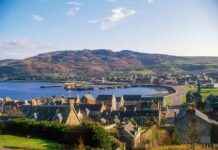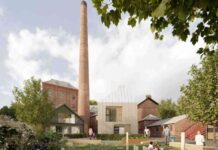Flamingo Land’s Lomond Banks Controversy: A Detailed Examination
The proposed development known as Lomond Banks, often disparagingly referred to as Flamingo Land Loch Lomond, has sparked significant controversy in Scotland. With a staggering 140,000 objections lodged through a petition portal, it stands as one of the most contested planning applications in the country’s history. As the decision on its future looms, scheduled to be addressed at a board meeting and public hearing by Loch Lomond & The Trossachs National Park on September 16, tensions are running high among supporters, opponents, and those advocating for alternative solutions for the Balloch community.
Unraveling the Complexities of Lomond Banks
The contentious nature of Lomond Banks raises critical questions about the nature of the proposed resort and how it deviates from previous iterations of the project. The Herald has embarked on a mini-series of investigative pieces to delve into the heart of this divisive debate. What amenities and features will Lomond Banks offer, and what distinguishes the latest application from its predecessors?
Located in the picturesque town of Balloch, the proposed development has ignited strong sentiments among locals and environmentalists alike. The allure of Loch Lomond’s natural beauty, coupled with concerns about the impact of large-scale commercialization, has galvanized a wave of objections that shows no signs of abating. The prospect of altering the landscape and character of this iconic region has resonated deeply with those who hold this area dear to their hearts.
In the Eye of the Storm: Balloch Residents Speak Out
To gain a firsthand perspective on the sentiments swirling around Lomond Banks, journalist Kevin McKenna ventured to Balloch to engage with residents who are staunchly opposed to the development. Their concerns range from fears of increased traffic congestion and environmental degradation to the perceived threat to the town’s unique charm and heritage. The grassroots opposition movement has coalesced around a shared desire to preserve the intrinsic beauty and character of Balloch for future generations.
However, in the midst of the outcry, there are voices advocating for a different approach to community engagement. Fiona Robertson, the community engagement lead for Lomond Banks, has encountered numerous misconceptions about the project, with many individuals mistakenly believing they were objecting to the creation of a theme park. This misunderstanding underscores the importance of clear communication and transparency in navigating complex planning processes.
Exploring Alternative Visions: The Case for Community-Led Development
Amidst the heated debate, a new community development trust has emerged, determined to chart a different path forward for Balloch. By asserting their ‘right to buy’ portions of the site, these local stakeholders are advocating for a more collaborative and community-driven approach to development. Their vision emphasizes sustainability, local control, and the preservation of Balloch’s unique identity in the face of external pressures.
The controversy surrounding Lomond Banks also raises broader questions about the role and function of National Parks in Scotland. As public scrutiny intensifies, there is a growing consensus on the need for these protected areas to balance conservation with sustainable development. The unfolding saga of Lomond Banks serves as a litmus test for how National Parks can effectively navigate competing interests and uphold their mandate to preserve Scotland’s natural heritage.
In Conclusion
As the fate of Lomond Banks hangs in the balance, the debate surrounding this contentious development underscores the complexities of balancing economic growth with environmental conservation and community well-being. The divergent perspectives and impassioned voices shaping this discourse reflect the deep-seated attachment that individuals and communities have to their natural surroundings. Ultimately, the outcome of this saga will not only impact the future of Balloch but also serve as a barometer for how Scotland navigates the delicate dance between progress and preservation in its most cherished landscapes.
































